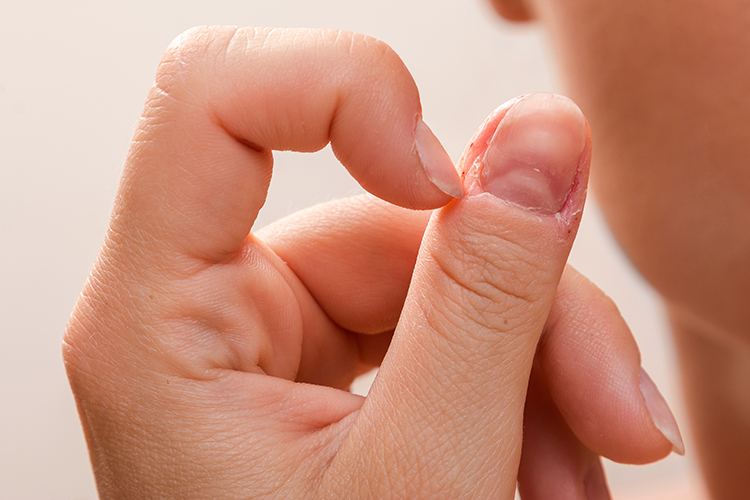Obsessive-Compulsive Disorder (OCD) and dermatillomania are closely related conditions that can significantly impact an individual’s daily life. Many people may not realize that dermatillomania, or skin picking, often coexists with OCD, as both involve compulsive behaviors driven by anxiety. Understanding this connection is crucial for effective treatment and support.
Individuals with dermatillomania may feel compelled to pick at their skin, resulting in physical and emotional consequences. This behavior can be a way to cope with the stress and anxiety associated with OCD, creating a cycle that can be difficult to break. Recognizing the signs and seeking help can lead to better management strategies.
Awareness of both OCD and dermatillomania is essential for those affected as well as their loved ones. Increasing knowledge surrounding these conditions can help foster empathy and encourage individuals to seek the support they need. With the right resources and understanding, it is possible to improve quality of life.
Understanding OCD and Dermatillomania
Obsessive-Compulsive Disorder (OCD) and dermatillomania are mental health conditions that significantly impact individuals’ lives. They are characterized by compulsions and repetitive behaviors, often driven by anxiety. Recognizing their definitions, symptoms, and interrelations is crucial for understanding these disorders.
Defining OCD
Obsessive-Compulsive Disorder is a chronic condition characterized by unwanted, intrusive thoughts (obsessions) and repetitive behaviors (compulsions) performed to alleviate anxiety. Individuals may experience obsessions related to cleanliness, safety, or order, leading to compulsive rituals, such as excessive hand-washing or counting.
Symptoms include:
- Persistent fears or doubts
- Repetitive actions or mental rituals
- Significant time spent on these behaviors
OCD can severely disrupt daily functioning and significantly impact relationships and self-esteem.
Exploring Dermatillomania
Dermatillomania, also known as excoriation disorder, involves the compulsive picking of skin, leading to tissue damage. Individuals often engage in this behavior as a response to anxiety or stress, seeking relief through physical action.
Common signs include:
- Fingertip abrasions or scars
- Increased time spent picking or healing
- Emotional distress related to skin appearance
Dermatillomania can coexist with OCD but is classified as a separate disorder within the obsessive-compulsive spectrum.
Comparing and Contrasting OCD and Dermatillomania
While both conditions involve compulsive behavior, they differ in focus and manifestation. OCD revolves around intrusive thoughts leading to compulsions, while dermatillomania specifically centers on skin-picking behavior.
Key differences include:
- Focus of Compulsions: OCD is driven by obsessions; dermatillomania is driven by the act of skin picking.
- Outcomes: OCD may lead to rituals affecting cleanliness or safety, whereas dermatillomania results in physical harm to oneself.
Both disorders can coexist and share underlying anxiety, highlighting the importance of effective treatment strategies tailored to individual needs.
Treatment and Management Strategies
Effective management of OCD and dermatillomania requires a combination of therapeutic approaches tailored to the individual’s needs. These strategies can significantly reduce symptoms and improve overall well-being.
Cognitive Behavioral Therapy Techniques
Cognitive Behavioral Therapy (CBT) is a highly effective treatment for OCD and dermatillomania. CBT focuses on identifying and changing negative thought patterns that contribute to compulsive behaviors.
Exposure and Response Prevention (ERP) is a specific CBT technique where the individual is gradually exposed to triggering situations. They learn to resist the compulsive behaviors associated with their anxiety.
Mindfulness strategies within CBT can help individuals become more aware of their triggers. Practicing awareness allows for more control over impulsive actions, fostering healthier responses to stress.
Pharmacological Interventions
Pharmacological interventions often complement therapy for managing OCD and dermatillomania. Selective serotonin reuptake inhibitors (SSRIs) like fluoxetine and sertraline are commonly prescribed.
Medication can help reduce anxiety levels and obsessive thoughts, providing a better foundation for engaging in therapy. The effectiveness of these medications varies, making it essential for healthcare providers to tailor prescriptions to the individual’s unique symptoms.
Regular follow-up appointments are vital for monitoring progress and adjusting dosages. Side effects should be discussed openly to ensure optimal adherence to the treatment plan.
Self-Care and Lifestyle Changes
Self-care practices significantly influence the management of OCD and dermatillomania. Establishing a consistent daily routine can create a sense of stability and reduce anxiety.
Incorporating stress management techniques alongside physical activity can provide additional support. Activities such as yoga, meditation, and regular exercise may help lower overall stress levels.
Healthy eating and adequate sleep are crucial for mental health. Individuals should strive for a balanced diet rich in nutrients and aim for 7-9 hours of sleep each night to enhance mood stability.
Support Systems and Resources
Building a strong support system is critical for individuals coping with OCD and dermatillomania. Family and friends can play vital roles in providing encouragement and understanding.
Support groups offer a space for individuals to share experiences and coping strategies. These groups can help reduce feelings of isolation and promote a sense of community.
Professional resources, such as therapists and counselors specializing in OCD, are invaluable. Engaging with qualified professionals ensures that individuals receive the best guidance and support tailored to their needs.


